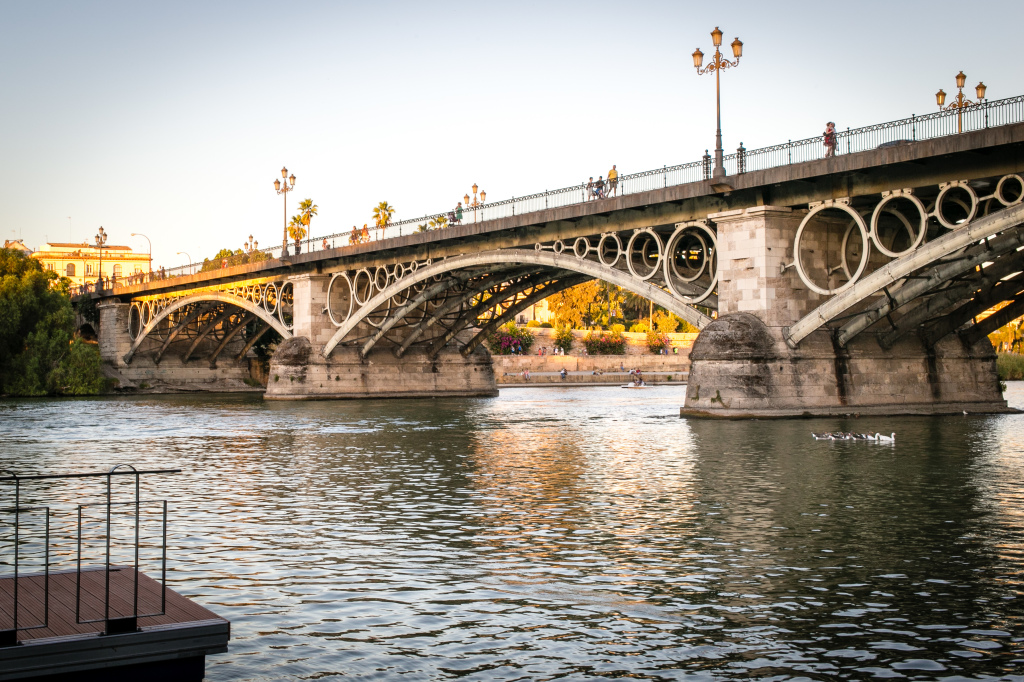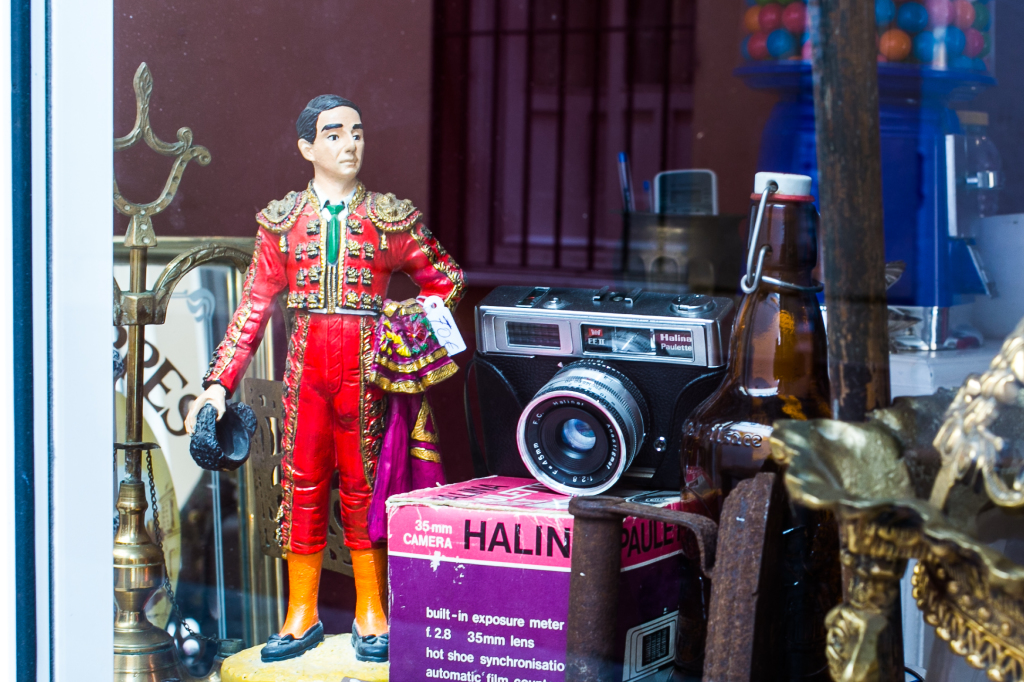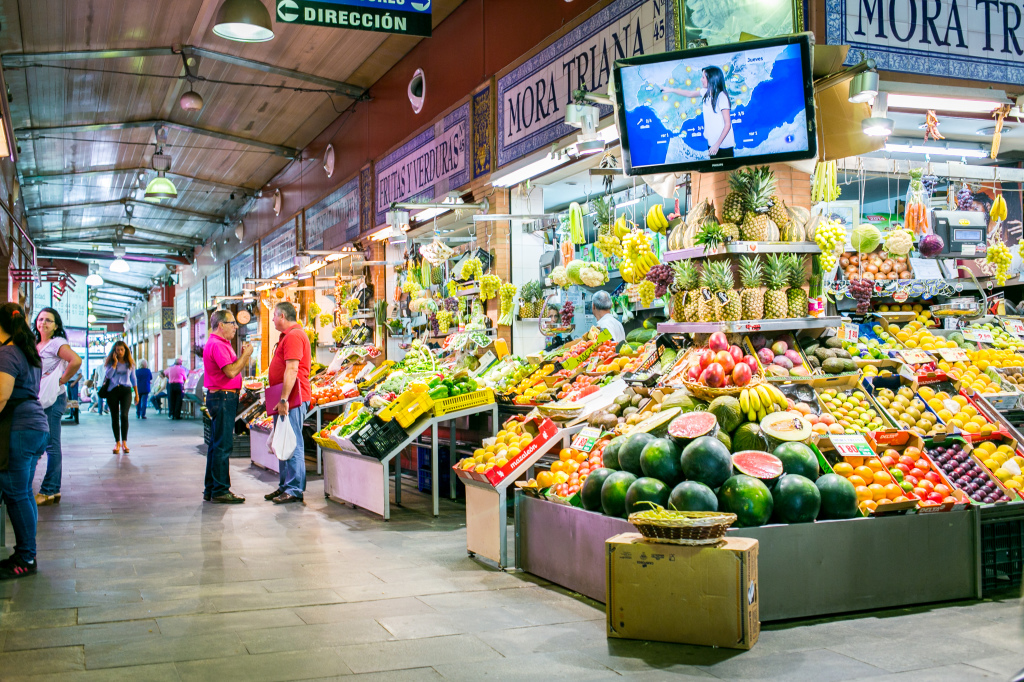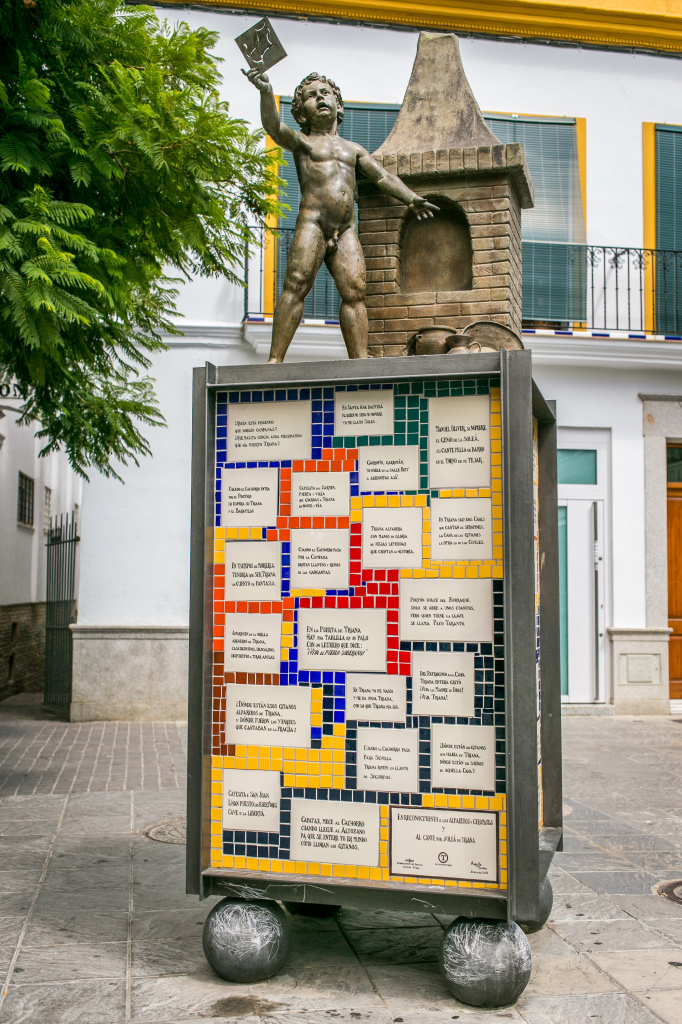We joined a free tour of the town across Seville called Triana. It’s home to Flamenco and famous bullfighters of Spain. It’s also originally a Gypsy settlement.
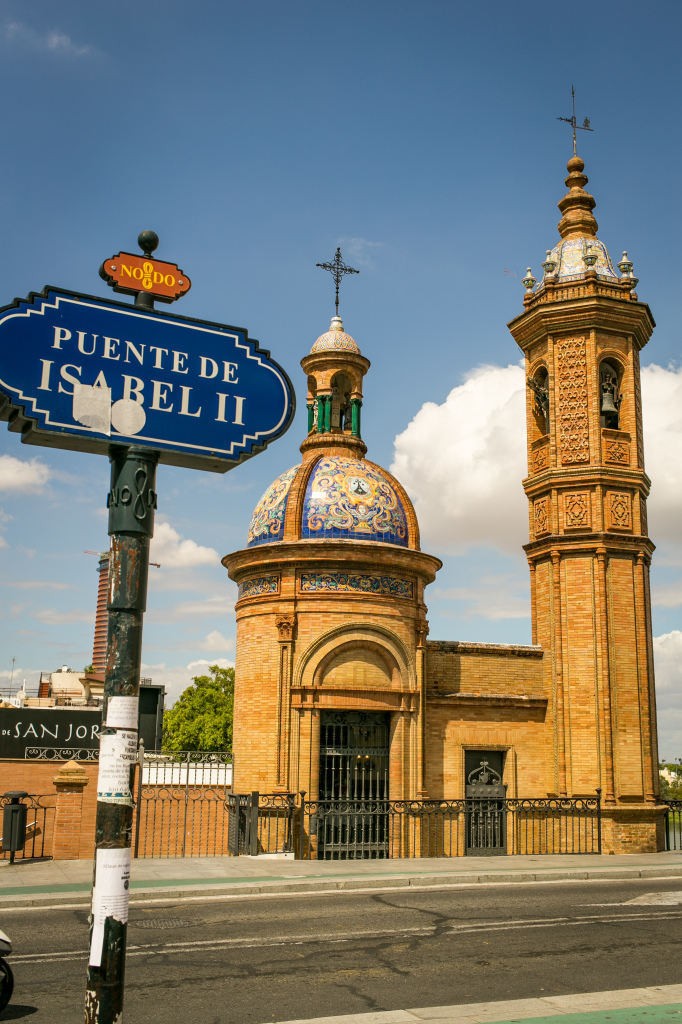
The Moorish Revival Chapel of El Carmen next to the Triana bridge
According to our guide, Flamenco originated from Gypsy slaves sent to the mines longing for home and their loved ones. Sounds of Flamenco was born from banging the hammer unto the anvil creating a heart pounding beat. Later on a guitar and singer was added along with the dancing.
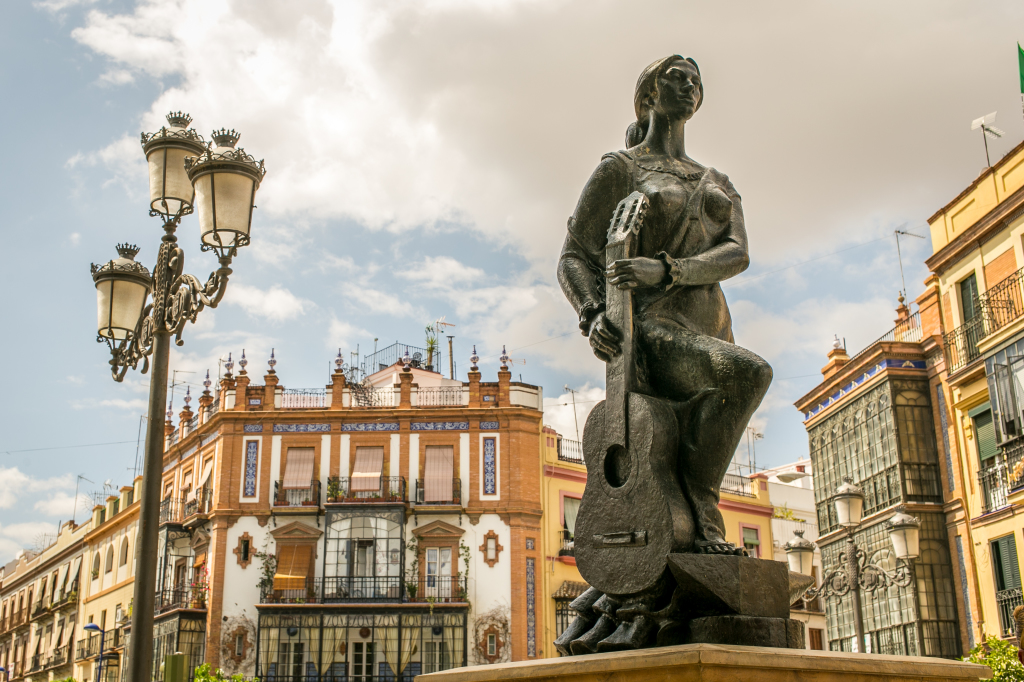
A theory proposed by Andalusian historian Blas Infante in his 1933 book Orígenes de lo Flamenco y Secreto del Cante Jondo suggests that the word flamenco comes from the Hispano-Arabic term fellah mengu, meaning “expelled peasant”; Infante argued that this term referred to the ethnic Andalusians of the Islamic faith, the Moriscos, who in order to avoid forced exile and religious persecution, joined with the Roma newcomers.
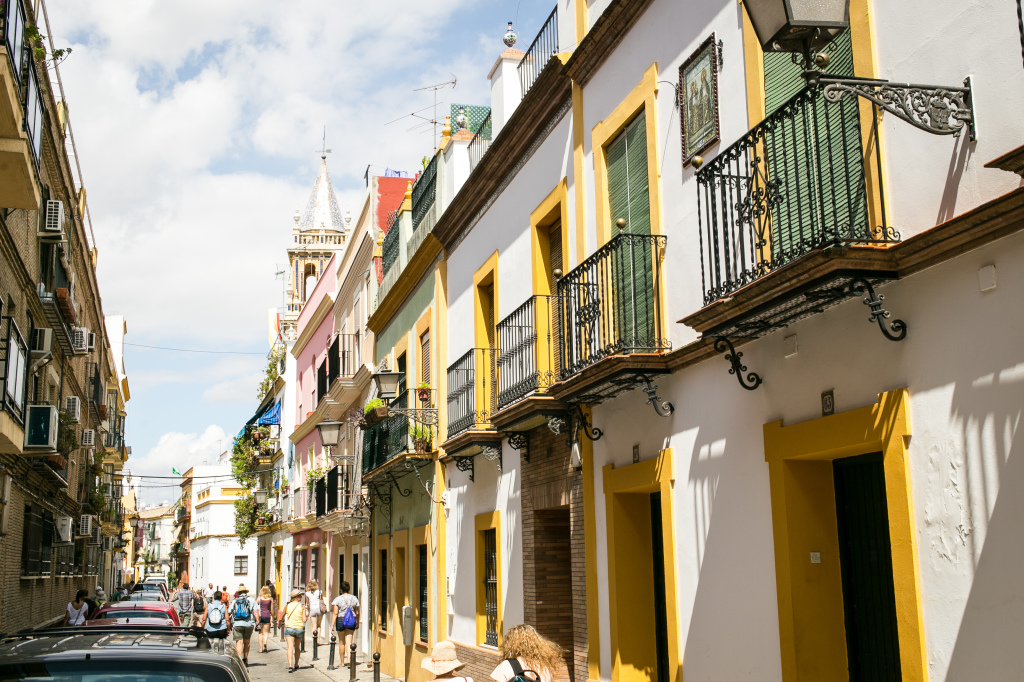
Triana is a neighbourhood and administrative district on the west bank of the Guadalquivir River in the city of Seville, Spain.
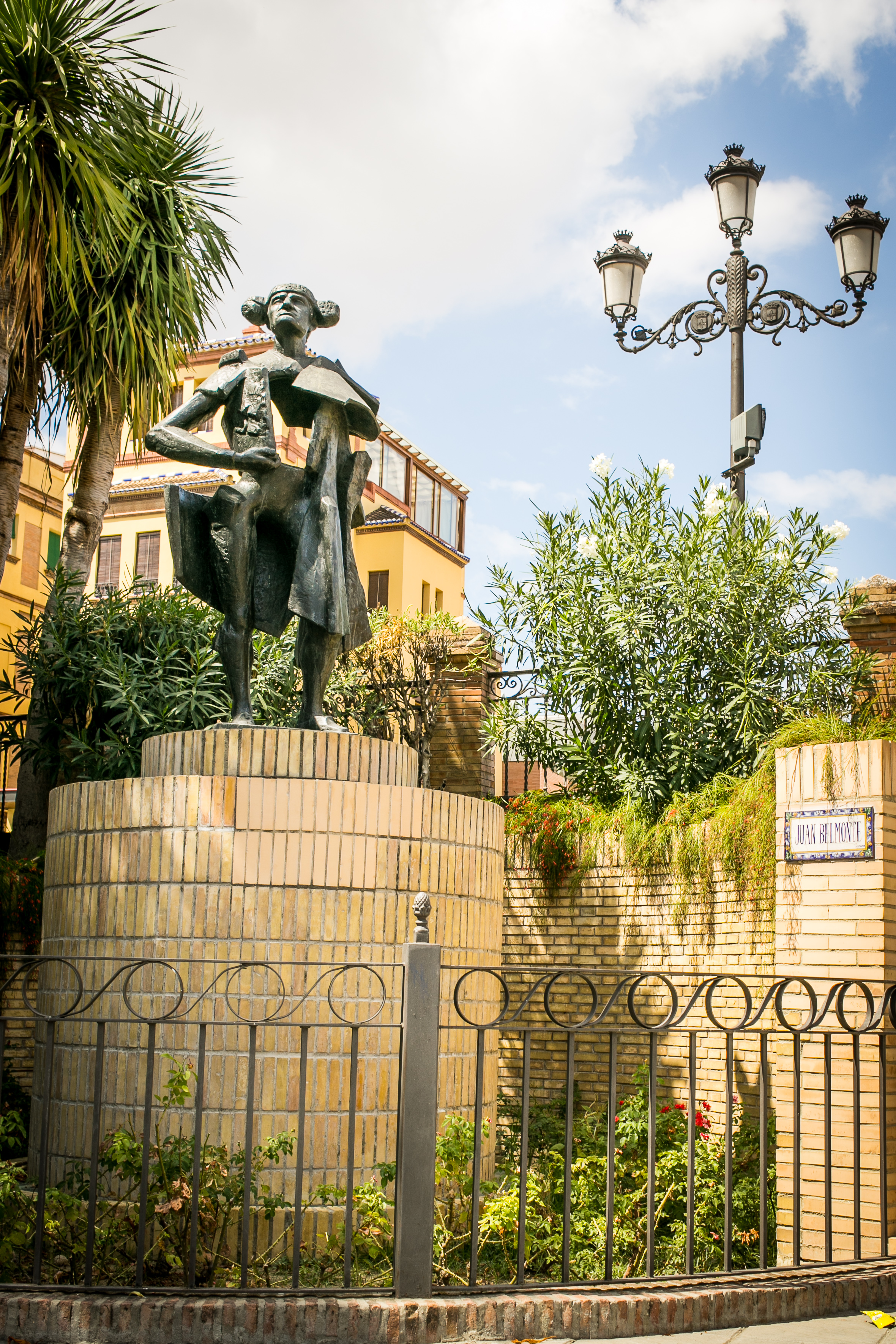
Juan Belmonte García (April 14, 1892 – April 8, 1962) was a Spanish bullfighter, considered by many to have been the greatest matador of all time.
According to our guide the bulls are a mix breed who only live up to five years. On their final year they are sent off to the arena and kept in the dark for days to be adjitated before facing-off with el matador. I’m not a fan of bullfighting as it’s a bit lopsided affair and cruel to animals. Despite its long history and popularity in Barcelona is the first region in Spain to ban bullfighting, in 2010 bullfighting was outlawed across the Catalonia. It is much part of spanish culture as hockey is to Canada maybe it’s time to ban fighting on the ice 😉
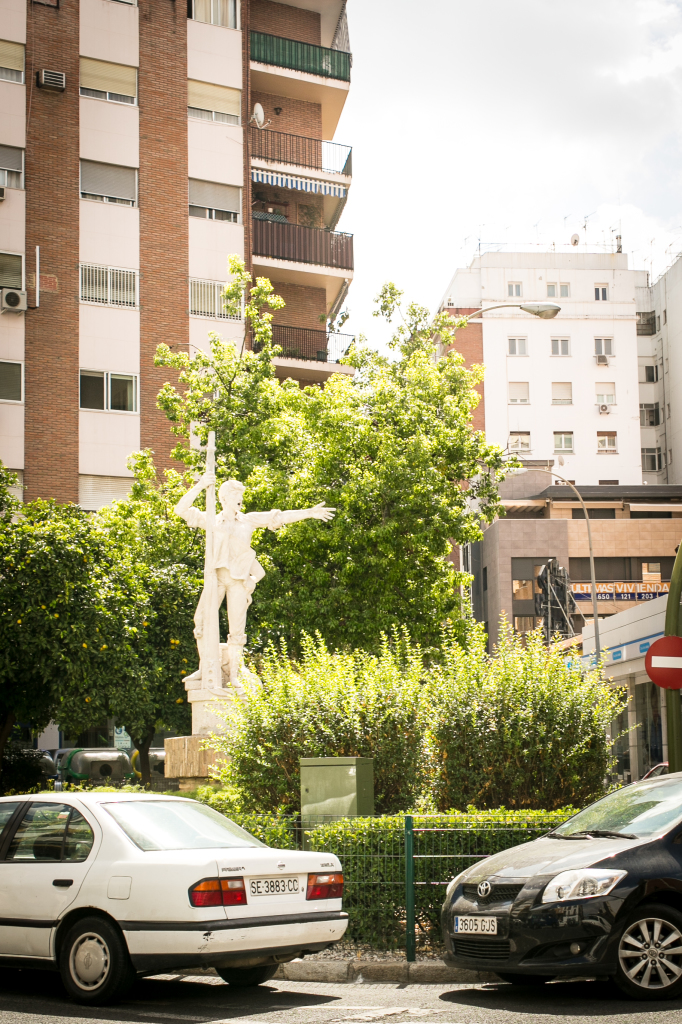
Rodrigo de Triana (born 1469 in Seville, Spain) was a Spanish sailor and believed to be the first European since the Vikings known to have seen America. Born as Juan Rodrigo Bermejo, Triana was the son of hidalgo and potter Vicente Bermejo and Sereni Betancour.
Rodrigo de Triana first sighted the New World on October 12, 1492, while on Christopher Columbus‘s ship La Pinta, he sighted America.[1]After spotting America at approximately two o’clock in the morning, he is reported to have shouted “¡Tierra! ¡Tierra!” (Land! Land!). Columbus claims in his journal that he saw “light” at 10 p.m. the previous day, “but it was so indistinct that he did not dare to affirm it was land.”[1]Triana went without reward and credit for this find. According to Gonzalo Fernández de Oviedo, Triana moved to Africa and converted to Islam from Christianity[2] following his unrewarded discovery.
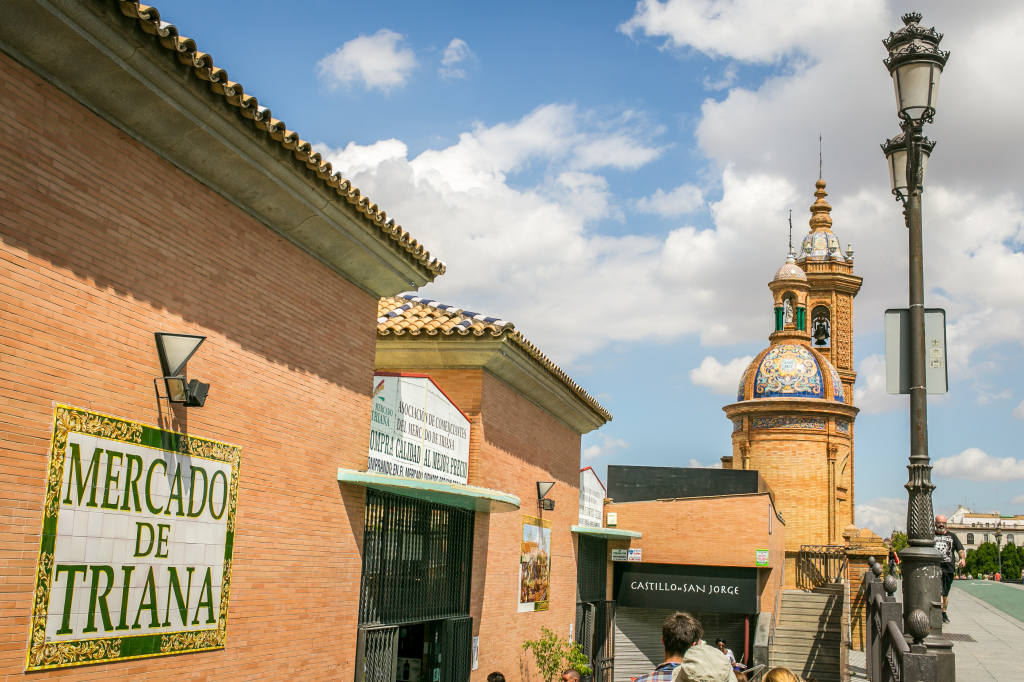
Since 2005, the Triana market, which began as an improvised fish market on the banks of the Guadalquivir in the 1830s, has been housed in a shiny new building and given the stamp “Traditional Shopping Center.” The vendors, however, continue to sell the same colorful mix of food, flowers, cheap fashion, and costume jewelry as before. It closes at 3pm and is not open on Sunday.
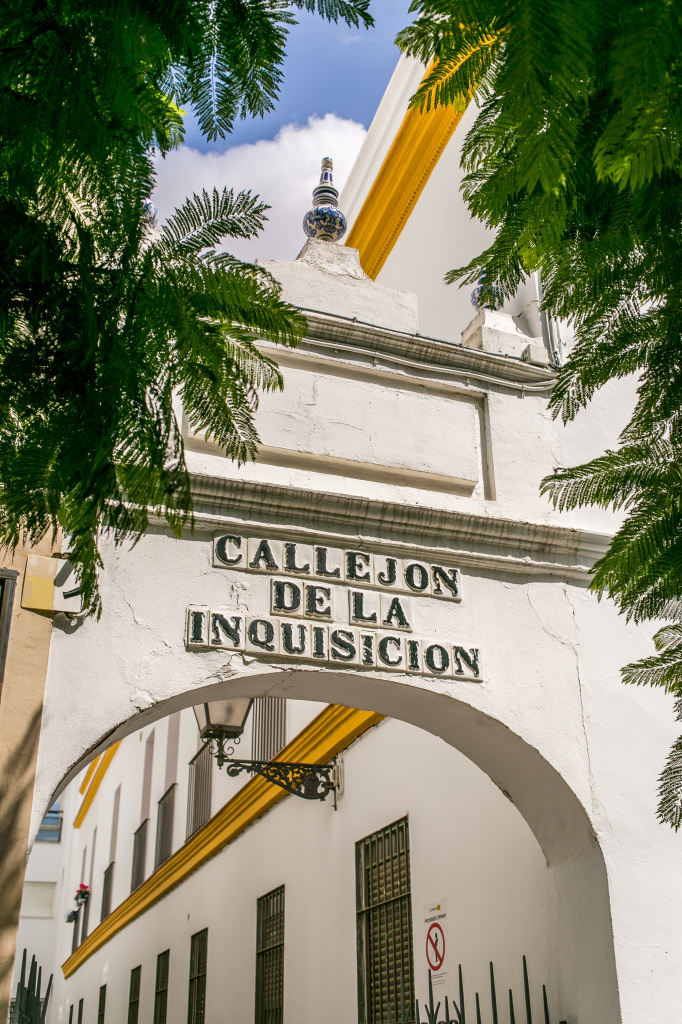
Alley of the Inquisition (Sevilla) It owes its name to be next to the castle of San Jorge , who was formerly the headquarters of the Inquisition, heretics prison and tribunal of the Inquisition. Inmates who were driven by this route or going to jail for trial or to be sentenced to the stake. Century and a half was the only remnant of the castle, until in 1992 on the occasion of the demolition and subsequent rehabilitation of the Triana market aflorasen the walls of the old fortifications.

